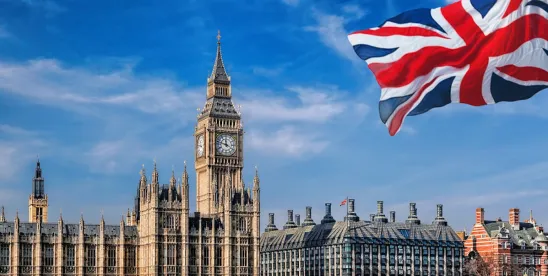To discover, or to disclose? That is the question. While English playwright William Shakespeare would no doubt be turning in his grave at the loose use of one of his most famous lines, the question serves as a reminder that the discovery process in the United States and the disclosure procedure in England and Wales, although similar, are distinct and that specific advice is needed if you find yourself grappling with a disclosure order from an English court.
Purpose: Disclosure Obligations and Limitations
Parties subject to English court proceedings are required to make available documents relevant to the issues of the case which either support or may adversely affect their position. This cards-on-the-table approach enables the English court to do justice between the parties and supports one of the core principles of the English judiciary: ensuring equal treatment to all.
However, the obligation to give disclosure and the required corresponding search is not unlimited. What is required from the parties is a reasonable search proportionate to the nature of the dispute, taking into account the complexity of the proceedings, the number of documents involved, the ease of their retrieval, and the significance of any document likely to be located.
Process: Disclosure Regimes and Preservation Duties
Following several revisions in recent years, the rules governing the disclosure process have been separated into two distinct regimes. Part 31 of the Civil Procedure Rules governs disclosure across the lower courts (known as the County Courts) and parts of the High Court. However, Practice Direction 57AD of the Civil Procedure Rules governs the process for proceedings in the Business and Property Courts (which include the Commercial Court).
Irrespective of the regime the party operates under, the process is broadly consistent and routinely uses technology. The process recognises that a “document” means anything in which information of any description is recorded. It is not limited to paper and can include, among other things, electronic communications, social media, and audio and visual recordings. “Document” also includes information stored on servers and back-up systems and information that has been “deleted.”
From an early stage, and in most instances even before formal proceedings have commenced but are being contemplated, parties must take reasonable steps to preserve potentially relevant documents in their control. This may require halting document deletion processes or forensically collecting certain data. Parties may use forensic data collection to preserve underlying metadata and to avoid evidence being compromised.
Critically, the duty to preserve and disclose relevant material persists up until courts give judgment or the dispute settles.
Beyond preserving documents, parties are required to act honestly and in a responsible and conscientious manner when giving disclosure. A party’s legal representative is also required to cooperate with the other parties’ legal representatives to promote reliable, efficient, and cost-effective disclosure conduct (including through technology).
While all of that may sound very polite and, dare we say it, very British, the reality is that disclosure is a significant undertaking (in terms of both time and cost) and is often hotly contested. Many disputes will settle before a party is due to give disclosure, to avoid the cost, or shortly after once the parties’ evidence is laid bare for all to see.
Privileged material is, however, protected from disclosure. In most instances, privileged material needs to be broadly identified, but inspection of the underlying document is restricted.
Procedure: Steps in Disclosure Process
Depending on the type of case, the specific rules that apply, and any court order, the disclosure procedure involves some or all of the following:
- Preservation of documents when contemplating proceedings.
- A pre-action exchange of documents enabling the parties to understand the dispute between them but also promoting early settlement.
- Another opportunity for an early exchange of documents when parties serve statements of case.
- The forensic collection of any potentially relevant data and an early assessment of the data landscape.
- The completion of a review document in which the parties must identify, discuss, and seek to agree on the scope of the disclosure exercise. This includes the use of technology-assisted review.
- Any remaining issues between the parties are addressed at a case management conference, following which the court makes the appropriate disclosure order finalising the parameters and timescale to complete the disclosure exercise.
- The review of any potentially relevant material – an eDiscovery platform is typically used to aid the relevance and privilege review.
- Before the court-stipulated deadline, disclosure must be given. This is typically done by way of a list with copies of the documents provided simultaneously or upon request. Usually, documents are provided electronically in their native form.
- At the time disclosure is given, each party must sign a statement to confirm compliance with their disclosure obligations.
- The review of the other sides’ documents and potentially a challenge to the completeness or accuracy if one party considers another party’s disclosure to be defective.
Consequences of Improper Disclosure
A failure to give proper disclosure may amount to contempt of court and have serious consequences: Parties’ claims may be dismissed, judgment may be entered against them, and/or they may face an adverse costs order.
Therefore, whilst there are many similar characteristics between U.S. discovery and disclosure in England and Wales, and the technology being deployed now is largely the same, legal counsel may be needed to avoid falling foul of the relevant rules and ending up on a sticky wicket.
As Mr Shakespeare so eloquently put it: “a fool doth think he is wise, but the wise man knows himself to be a fool.”



 />i
/>i

